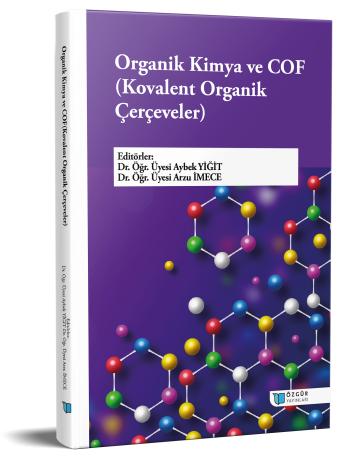
Organik Kimyanın Tarihsel Gelişimi, Uygulama Alanları ve Sentez Yöntemleri
Şu kitabın bölümü:
Yiğit,
A.
&
İmece,
A.
(eds.)
2024.
Organik Kimya ve COF (Kovalent Organik Çerçeveler).
Özet
Karbon kimyası olarak bilinen organik kimya; karbon atomunun diğer elementlerle birleşerek oluşturduğu bileşiklerin yapısını, özelliklerini, reaksiyonlarını ve sentez yöntemlerini inceleyen kimyanın bir alt dalıdır. Organik bileşikler, genel olarak canlıların yapısında bulunan karbon bileşikleridir. Yaşamın temeli olan proteinler, karbonhidratlar, lipitler ve nükleik asitler gibi biyolojik moleküller de organik bileşiklerdir. Bu nedenle organik kimya; biyoloji, tıp, farmasötik ve malzeme bilimleri gibi birçok alanda temel bir rol oynar. Organik kimyanın kökenleri, Antik Çağlara kadar uzanır. Doğal boyalar, mumlar, alkol ve ilaçlar gibi organik maddeler insanlık tarihi boyunca kullanılmıştır. Organik kimyanın gelişimi, 19. yüzyılda Wöhler'in inorganik maddelerden üreyi sentezlemesiyle başlamıştır. Bu deney, organik bileşiklerin sadece canlı organizmalarda bulunduğu yönündeki Vitalizm teorisini çürütmüştür. 20. yüzyılda ise spektroskopi teknikleri ve organik sentez yöntemlerindeki gelişmeler, organik kimyanın daha da anlaşılmasını sağlamıştır. Organik kimya, günümüzde oldukça geniş bir uygulama alanına sahiptir. Yeşil kimya, İlaç geliştirme, polimer kimyası, boya ve pigmentler, gıda kimyası, tarım kimyası, malzeme bilimi, petrokimya gibi birçok alanda organik kimya prensipleri kullanılmaktadır. Özellikle ilaç endüstrisi, yeni ve daha etkili ilaçların geliştirilmesinde organik kimyadan büyük ölçüde yararlanmaktadır. Organik kimya, karmaşık moleküllerin sentezini ve modifikasyonunu içerir. Genellikle çok adımlı bir süreçtir ve çeşitli reaksiyon türlerini içermektedir. Sübstitüsyon, ekleme, eliminasyon ve izomerizasyon reaksiyonları, organik sentezlerde sıklıkla kullanılan temel reaksiyon türlerindendir. Son yıllarda, yeşil kimya prensiplerine uygun, çevre dostu ve sürdürülebilir sentez yöntemleri üzerine çalışmalar yoğunlaşmıştır. Bu çalışma organik kimyanın tarihsel gelişimi, uygulama alanları ve sentez yöntemleri üzerinde durmaktadır.

